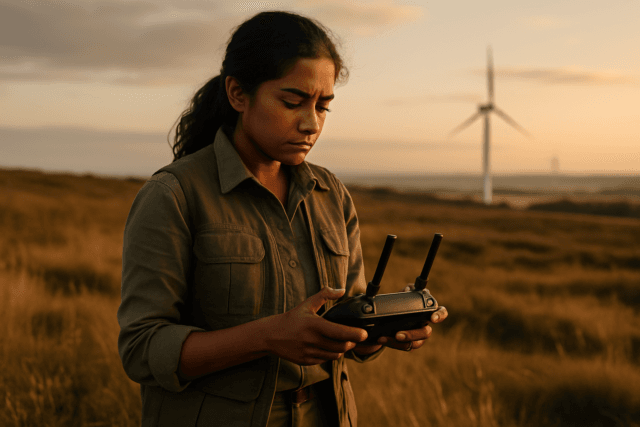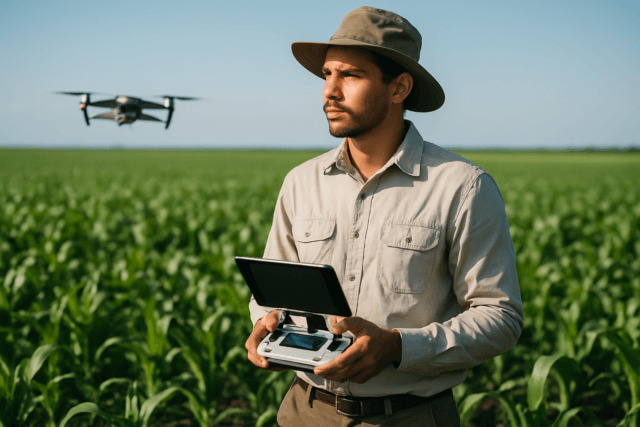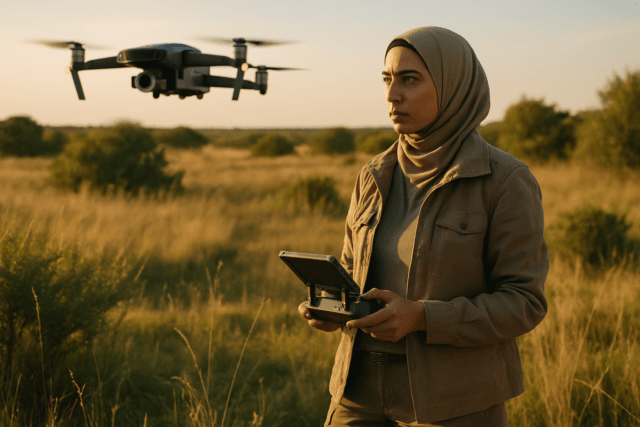Efficient irrigation management is crucial for ensuring optimal crop growth and maximizing agricultural yields. Traditional irrigation methods often involve fixed schedules and uniform water application, which can lead to inefficiencies such as water wastage and uneven crop growth. Drone-assisted irrigation management represents a significant shift in how to approach water conservation in agriculture. Drones equipped with advanced sensors offer significant advantages for irrigation management in horticulture. By deploying UAVs equipped with multispectral cameras and thermal sensors, real-time insights into crop water stress levels and soil moisture content across entire operations can be gained.
Why Drones are a Game Changer in Irrigation
Drones are transforming agriculture in unprecedented ways. Farmers now utilize drones for various applications, and one vital application is efficient irrigation management. Here’s how drones are changing the face of agriculture and irrigation:
- High-Resolution Imaging and Remote Sensing: Drones are equipped with high-definition cameras and multispectral sensors to help farmers monitor their farms, surveying moisture levels, plant health, and soil conditions.
- Precision Irrigation: Drones are vital for enhancing irrigation precision and help in covering large areas in a short while by providing the amount of soil-absorbed moisture content, revealing the areas that need irrigation, avoiding flooding and wastage of water resources.
Benefits of Drone Irrigation Management
Integrating drones into irrigation systems offers numerous benefits, making it a smarter, faster, and more cost-effective approach. Here’s a detailed look at these advantages:
Efficient Water Use: By mapping and monitoring fields with drones, areas that are over-watered or under-watered can be easily identified, optimizing irrigation systems and preventing wastage. Drones help farmers conserve water by pinpointing exactly where irrigation adjustments are needed.
Cost Savings: Using drones for farming can lead to lower water bills. Drones reduce labor expenditures and operating expenses related to water management tasks by covering large regions in a fraction of the time it would take for traditional approaches. Operational costs can be reduced as drones diminish the need for manual labor during irrigation management.
Crop Health Monitoring: Agriculture drones equipped with multispectral sensors capture images in different wavelengths of light, enabling farmers to detect signs of stress or disease in crops. Drones provide real-time data on plant health, allowing for timely intervention and improved crop yield.
Accurate Data Collection: Drones equipped with remote sensing technologies can provide high-resolution spatial and temporal data on soil moisture variability across a farm. Drones offer real-time data collection on crop conditions.
Improved Productivity: The use of drones in precision agriculture can increase productivity by up to 20%, while reducing input costs by 15%.
Environmental Impact Reduction: By reducing water waste and optimizing irrigation practices, drones contribute to more sustainable agricultural practices that minimize the environmental footprint of farming activities. Drones also promote environmental sustainability by minimizing water consumption and runoff.
Flexible Scheduling: Drones provide the necessary data to fine-tune irrigation systems, ensuring that water and fertilizers are applied accurately and efficiently.
Historical Data Analysis: Drones facilitate the adoption of advanced irrigation techniques such as drip irrigation and fertigation.
Risk Mitigation: Regular drone monitoring catches irrigation issues up to 70% faster than ground inspections, saving water and preventing crop damage.
Ease of Use: Drones simplify the process of managing irrigation systems by offering fast, accurate, and data-driven insights.
Key Applications of Drones in Irrigation
Drones simplify the process of irrigation by offering fast, accurate, and data-driven insights. These unmanned aerial vehicles are equipped with thermal, multispectral, and visual sensors that detect water stress, monitor soil health, and optimize resource use. Here’s a closer look at how drones are applied in precision irrigation:
Detecting Irrigation System Problems
Drones can identify irrigation system failures by spotting water pooling or dry patches that indicate broken sprinkler heads or pipeline leaks. Thermal imaging drones are particularly effective at revealing underground leaks by showing temperature differences in the soil. Drones equipped with thermal cameras can detect changes in ground temperature, indicating leaks. Multispectral cameras can identify areas where water isn’t reaching due to clogs.
Monitoring Soil Moisture
Drones equipped with multispectral cameras and thermal sensors monitor crop water stress and soil moisture in real-time. By capturing thermal images, drones can create detailed moisture maps that highlight variations across a field. This capability allows farmers to pinpoint specific areas that require more or less water, optimizing irrigation practices.
Optimizing Water Distribution
Drones provide data for precision irrigation systems, applying water only where needed, conserving water and reducing water bills. They help optimize water usage across fields. By identifying areas of the field that require irrigation and precisely applying water, drones minimize wastage and improve water efficiency.
Facilitating Advanced Irrigation Techniques
Drones can facilitate the adoption of advanced irrigation techniques such as drip irrigation and fertigation. These methods require precise water and nutrient delivery to be effective, and drones provide the necessary data to fine-tune these systems, ensuring accurate and efficient application.
Types of Drones Used in Irrigation Management
When searching for top irrigation management drones, prioritize features like high-resolution imaging and RTK capabilities for precise data collection. Drones with multispectral and thermal imaging capabilities are especially beneficial for irrigation management, as they reveal insights not visible to the naked eye. Here are some types of drones suited for irrigation management:
- Multi-Rotor Drones: More popular and widely used due to their ability to take off and land vertically.
- Fixed-Wing Drones:
- Hybrid Drones: Contains capabilities of both the fixed-wing and multi-rotor drone.
Some popular models include:
- DJI Matrice 350 RTK
- DJI Mavic 3 Thermal
- DJI Mavic 3 Multispectral
- DJI Agras T50
- DJI Agras T25
Challenges and Considerations
Despite their benefits, drone technology presents challenges. It’s essential to recognize the challenges that must be overcome to fully realize the potential of drone technology.
Initial Investment Costs
Initial investment costs can be high for small farmers. Drone technology can be expensive, especially for small and marginal farmers in rural areas.
Regulatory Issues
Regulatory issues may arise when using drones. Regulatory frameworks need to be established to govern the safe operation of drones in agricultural settings.
Technical Expertise
The use of drones also requires technical knowledge and training on the part of the farmer or personnel operating the drone. Limited awareness of drone technology can be a barrier. Farmers may not have the necessary skills and expertise to operate and maintain drones effectively.
Connectivity and Infrastructure
Rural areas may lack the necessary infrastructure for drone operations, such as charging stations and maintenance facilities. Poor internet connectivity in rural areas can also hinder drone operations.
The Future of Drone Irrigation Management
Continued advancements in drone technology hold immense potential for irrigation management. With improvements in data accuracy, artificial intelligence, and smart algorithms, drones will further optimize water usage in agriculture. Integration with data analytics and artificial intelligence will enable drones to make real-time decisions for optimal irrigation.
By embracing drone technology, farmers can achieve more efficient and sustainable irrigation practices, leading to improved crop yields, reduced water waste, and enhanced profitability. As drone technology continues to evolve, its role in irrigation management is expected to expand, offering even more precise and effective solutions for water management in horticulture.





